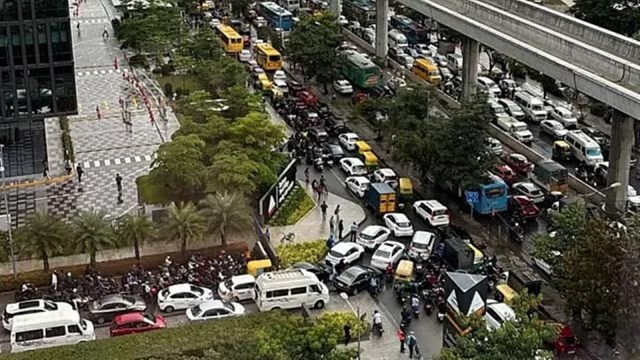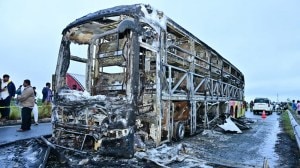Traffic department to soon use data from cab aggregators to decongest roads along Bengaluru’s IT Corridor
Currently, the Bengaluru traffic police department is collecting data of the number of private vehicles entering and exiting the 40 tech parks along the IT Corridor.
 According to traffic police officials, in Bengaluru, the vehicle load in the second week of January was almost twice compared to the first week due to the Makar Sankranti festival. (File photo)
According to traffic police officials, in Bengaluru, the vehicle load in the second week of January was almost twice compared to the first week due to the Makar Sankranti festival. (File photo)In yet another effort to make data-driven decisions to decongest traffic along the IT Corridor on the Outer Ring Road (ORR), the Bengaluru traffic police department said it will soon collect data from cab aggregators to issue traffic advisories accordingly.
Kuldeep Kumar Jain, DCP Traffic (East), said the traffic police department is in talks with different cab aggregators to seek information about the number of rides booked and the approximate location details in a given hour.
“With the information, we will understand the region from which more rides are being booked. Based on the average number of bookings per hour, we will be able to predict the traffic congestion in the evening hours. In case of more bookings, we can start diverting traffic early on and place measures more efficiently,” said Jain.
Recently, the traffic police department also launched its new AI (Artificial Intelligence) backed smart traffic engine ASTraM (Actionable intelligence for Sustainable Traffic Management) which provides holistic insights on road traffic scenarios for Bengaluru city.
According to traffic police officials, in Bengaluru, the vehicle load in the second week of January was almost twice compared to the first week due to the Makar Sankranti festival.
“In the east division, we saw heavy outbound traffic towards KR Puram and further towards Andhra Pradesh. Private buses were in huge numbers and accounted for most of the vehicular traffic. In fact, we witnessed more buses in the period leading up to the Sankranti festival that we usually do in a year,” said Jain. The data about this is being collected and stored in the new AI-backed application to come up with suitable traffic measures, he added.
Currently, the traffic police department is collecting data of the number of private vehicles entering and exiting the 40 tech parks along the IT Corridor. The department had started off by collecting data from 18 tech parks since September.
The move to take up the initiative came after the infamous traffic gridlock that choked ORR on September 27. Apart from tech parks, the department is also collecting data on vehicular count from mobility apps like MoveinSync.
Generally, the traffic officers receive data on the vehicular count from the tech parks by 1 pm, based on which they restrict the movement of heavy vehicles, impose traffic diversions and inform tech parks to plan for a staggered exit.
In addition, the traffic department is also relying on historical data which is already stored in the database to predict traffic trends and impose decongestion methods accordingly.







